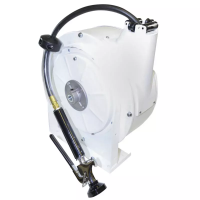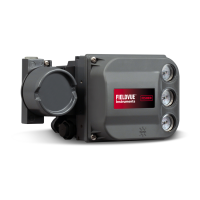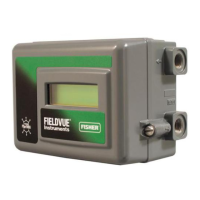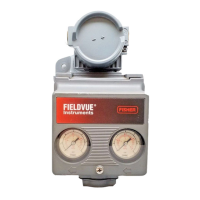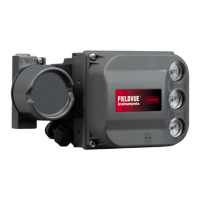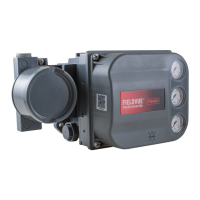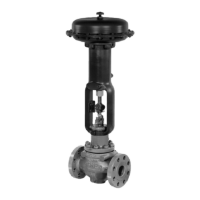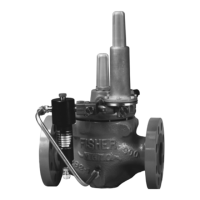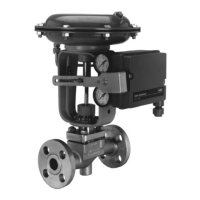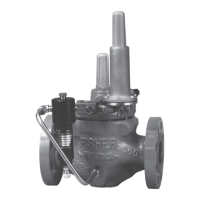Instruction Manual
D102748X012
Configuration
October 2014
66
sensitivity to the knowledge of a fluid density is maximum at the process condition where that fluid covers all of the
displacer, and zero at the opposite extreme process condition.
If the fluid density changes are batch‐related or very gradual, it may be practical to keep track of the SG of the fluid and
periodically reconfigure the transmitter memory to match the actual process condition. Frequent automatic updates
to this variable are not advised, as the NVM location where it is stored has an expected lifetime of about 10,000 write
operations. If changes are only a function of temperature, the characteristic of the fluid can be loaded once in the NVM
table, and an RTD connected to measure the process temperature and drive the correction table. If temperature is not
the driving influence, the best that can be done is to calibrate for the widest potential differential SG. (This will keep
the variations as small a percentage of calibrated span as possible.) Then calculate an alarm threshold that will prevent
vessel over‐ or under‐flow at the worst case error.
Extreme Process Temperatures
For applications that will run at extreme temperatures, the effect of process temperature on the torque tube must be
taken into account. Best results are obtained by running the torque tube calibration at actual process temperature.
However, the decrease in spring rate with temperature can be simulated at room temperature by increasing the load
on the torque tube during room‐temperature calibration. This will produce the same deflection that would occur at
actual process conditions. This compensation is theoretical and not perfect, but is still an improvement over ambient
calibration with no attempt at compensation.
Note
For additional information, refer to the Simulation of Process Conditions for Calibration of Fisher Level Controllers and
Transmitters instruction manual supplement (D103066X012), available from your Emerson Process Management sales office or at
www.fisher.com.
Temperature Compensation
If the process temperature departs significantly from calibration temperature, you will need to apply a correction
factor. Interpolate the correction factor from the material‐specific tables of theoretical normalized modulus of rigidity
versus temperature, as described in the Simulation of Process Conditions for Calibration of Fisher Level Controllers and
Transmitters instruction manual supplement. Multiply the measured torque tube rate (editable in the review menu
under factory settings) by the correction factor and enter the new value. When you cannot calibrate at process
temperature this approach allows a better approximation of the actual torque tube behavior at process conditions.
